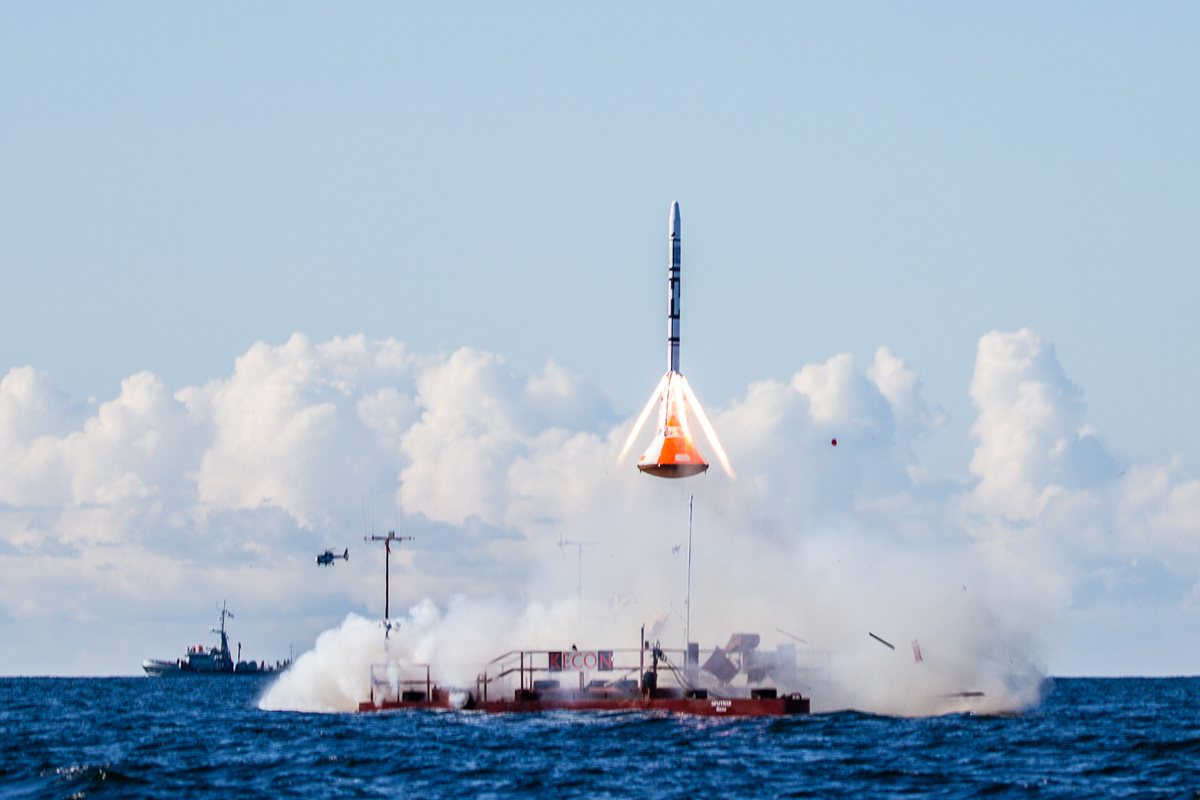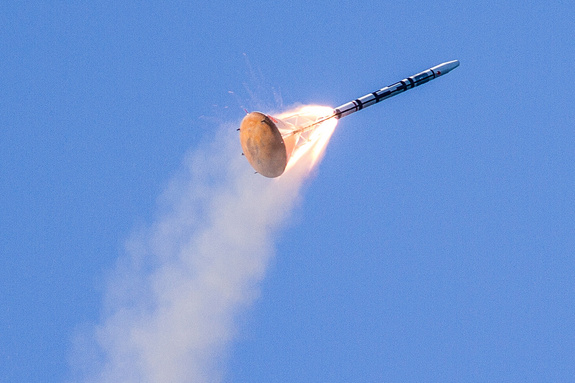
A Danish non-profit organization launched its homemade space capsule Sunday (Aug. 12) in a key test of the craft's safety systems.
Copenhagen Suborbitals' "Beautiful Betty" capsule — with a crash-test dummy named Randy aboard — blasted off from a floating platform in the Baltic Sea, carried skyward by the group's Launch Escape System (LES) rocket. The flight was designed to see how well the LES and Beautiful Betty's various parachutes would work in the event of a serious launch mishap.
The results were a bit mixed, with the LES spinning out of control and cutting Beautiful Betty loose at an altitude too low for the capsule's parachutes to deploy properly. Betty slammed hard into the ocean, causing a large dent (and doubtless giving poor Randy quite a start).
Still, the Copenhagen Suborbitals team, which is led by Kristian von Bengtson and Peter Madsen, was pleased. [Photos of the Space Capsule Flight]
"What a day ... all systems worked ... system tumbled providing low apogee and not fully deployed parachutes. But we are happy," the group wrote on Facebook shortly after the test. "Much more updates soon!"
The ultimate goal of Copenhagen Suborbitals, which has been running full-steam since 2008, is to launch people into suborbital space on the cheap. The group relies on private donations and money from sponsors to fund its activities.
"We aim to show the world that human spaceflight can be different from the usual expensive and government controlled project," the Copenhagen Suborbitals website states. "We are working fulltime to develop a series of suborbital space vehicles — designed to pave the way for manned spaceflight on a micro size spacecraft."
Get the world’s most fascinating discoveries delivered straight to your inbox.
One such spacecraft is Beautiful Betty, previously known as Tycho Deep Space. Betty is 6.6 feet (2 meters) wide and weighs about 940 pounds (425 kilograms). The capsule can fit one passenger, and Copenhagen Suborbitals hopes to eventually send it to an altitude of 62 miles (100 kilometers) — the generally accepted point where outer space begins.
Sunday's test flight was the second in a span of just more than two weeks for Copenhagen Suborbitals. On July 27, the group launched its two-stage Smaragd-1 rocket from a floating Baltic Sea pad.
About 1.5 seconds into the flight, however, the 19-foot (6 m) rocket's nosecone broke off, ending the stream of trajectory data and leaving Smaragd-1's final speed and altitude a mystery, von Bengston wrote on his "Rocket Shop" blog on Wired.com.
This story was provided by SPACE.com, a sister site to LiveScience. Follow SPACE.com for the latest in space science and exploration news on Twitter @Spacedotcom and on Facebook.





